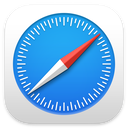DCE1237 OBSERVATION, ASSESSMENT AND EVALUATION IN YOUNG CHILDREN - SEM 2 (2024/2025)
Class
Lessons
Here is the class outline:
1. COURSE INFORMATION1.Table 4 1 section
|
|
|
2. CH 1 : THE INTRODUCTION OF OBSERVATION AND ASSESSMENT IN EARLY CHILDHOOD EDUCATIONCLO1 :Identify basic terminologies and purposes of observation, assessment and evaluation in early childhood. CLO2 :Explain different types of assessment methods and evaluation process in assessing children. 1.1 Understanding observation and assessment in early childhood education and care 1.2 The importance of observation and assessment for early childhood 1.3 Islamic Perspective 2 sections
|
||
|
3. CH 2 : OBSERVING EARLY CHILDHOODCLO1 :Identify basic terminologies and purposes of observation, assessment and evaluation in early childhood. CLO2 :Explain different types of assessment methods and evaluation process in assessing children. 2.1 Purposes of observation 2.2 Types of observation 2.3 Observation process and guidelines 2.4 Differences between assessing infant, toddlers and preschoolers 2.5 Strengths and weakness of using observation for young children 2 sections
|
||
|
4. CH 3 : ASSESSMENT FOR YOUNG CHILDRENCLO2 :Explain different types of assessment methods and evaluation process in assessing children. CLO3 :Use the assessment methods and evaluation on the children development. 3.1 Developing a comprehensive system of assessment 3.2 The process and guidelines of assessment for young children 3.3 Types of assessment 3.4 Assessment for holistic development for young children 2 sections
|
||
|
5. CH 4 : DEVELOPING ASSESSMENT& EVALUATION METHODS FOR CHILDRENCLO2 :Explain different types of assessment methods and evaluation process in assessing children. (C2) CLO3 :Use the assessment methods and evaluation on the children development. (C3 ) 4.1 Standardized test 4.2 Checklist 4.3 Rating scales and Rubrics 4.4 Performance-based 4.5 Portfolio 4.6 Project-based 2 sections
|
||
|
6. CH 5 : ADULT’S ROLES IN OBSERVING AND ASSESSING EARLY CHILDHOODCLO1 :Identify basic terminologies and purposes of observation, assessment and evaluation in early childhood. (C1) CLO2 :Explain different types of assessment methods and evaluation process in assessing children. (C2) CLO3 :Use the assessment methods and evaluation on the children development. (C3 ) . 5.1 Teacher’s roles and strategies in classroom setting 5.2 Parental involvement 5.3 Documentation and Compilation of Assessment 5.4 Uses of Assessment Data 2 sections
|
||
|
7. CH 6 : REFLECTIVE PROCESS & CONTEMPORARY ISSUES IN ASSESSING EARLY CHILDHOODCLO1 :Identify basic terminologies and purposes of observation, assessment and evaluation in early childhood. (C1) CLO2 :Explain different types of assessment methods and evaluation process in assessing children. (C2) CLO3 :Use the assessment methods and evaluation on the children development. (C3 ) 6.1 What Is Reflective Practice? 6.1.1 The Concept of Reflective Practice 6.1.2 Why Do We Reflect? 6.1.3 Reflective Models and Types of Reflection 6.2 Reflective Processes 6.2.1 Stage 1: Selecting a Critical Incident to Reflect On 6.2.2 Stage 2: Observing and Describing the Experience 6.2.3 Stage 3: Analyzing the Experience 6.2.4 Stage 4: Interpreting the Experience 6.2.5 Stage 5: Exploring Alternatives 6.2.6 Stage 6: Framing Action 6.2.7 Reflection on Your Practicum 2 sections
|
||
|




(2).png?lmsauth=3cb7682b0a533780c6abc87b2b5791a2cd7a7ace)
(3).png?lmsauth=53f59a3eff4c42f64959607fcaecdc3482d82cbd)